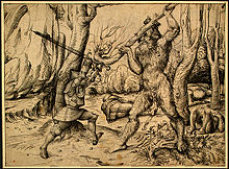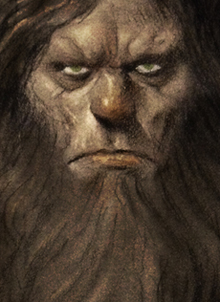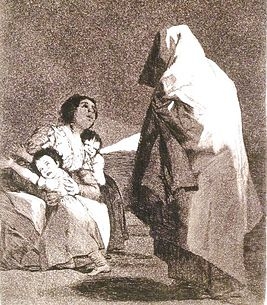The Yowie-ocalypse
Beyond the Darkening Ecliptic
Yowie / Bigfoot

Contact

Home
History of the Hairy Man of New South Wales’ Central West Region
The Legend of the Hairy Man
Children whisper tales of a strange hermit, the Hairy Man, who haunts the winding road along the Brushy
Creek. Many legends persist about the Hairy Man. Some believe he was an infant accidentally left behind by settlers heading west in
the 1800s. Raised by wild animals in the fern bluffs, the Hairy Man viewed the creek as his own. He resented the intrusion of strangers
into his territory and would jump out of the trees to frighten people away. Or, hanging from the leafy canopy above the road, he would
drag his feet across the top of passing carriages. On one occasion, the Hairy Man attacked a horse-drawn wagon, spooking the horses.
The old hermit was supposedly run over by the wagon and killed, and now his spirit lingers along the creek and road.
On a silent,
moonlit night, perhaps you will see his eerie silhouette on the bluffs along Brushy Creek. The faint, other-worldly moan that echoes
through the night. Is it the sound of the wind as it pushes through the treetops or the lonely cry of a coyote or perhaps....something
more sinister?
By Gwen King
http://www.hairymanfestival.org/legend.html
Folklore of the Wild or Hairy Man
The Hairy Man of CW NSW
Folklore of the Wild or Hairy
Man
Next: The Hairy Man in CW NSW
The Bogey-man is a "monster [that] has no specific appearance, and conceptions about it can vary drastically from household to household
within the same community; in many cases, he has no set appearance in the mind of an adult or child, but is simply a non-specific
embodiment of terror"(1) and plays an important role in Western folk-culture through a variety of forms and concepts. One being the
Wild Man:



In the colonies of the 18th and 19th centuries, the concept of the Wild/Hairy Man - 'liminal between the known and the unknown'[3] -
was imported with the freemen and convicts from the U.K. and found a ready home amid Australia's harsh and alien landscape. Since
"wild men" - the original indigenous inhabitants - already existed posed a very real threat to colonists, the tradition bogey-man
concept of Wild Man morphed in order to differentiate the real from the liminal. "Wildness" and "otherness" became
emphasised by "hairiness" while retaining an ambiguous human-like form readily identifiable with earlier folk traditions. Hence,
the Hairy Man.
Traditional folk-tales like that of Iron John (also known as The Hairy Man) circulated providing further fuel
to the concept of the Hairy Man which was, in turn, both influenced and reinforced by similar wild- and bogey-man concepts among
the existing indigenous groups:
As the name implies, the key characteristic of the wild man is his wildness. "Civilised" citizens regarded wild men as beings of the
wilderness, and as such as representing the antithesis of civilization. Scholar Dorothy Yamamoto has noted that the "wilderness" inhabited
by the wild man does not truly indicate a place totally beyond human reach, but rather the liminal zone at the edge of civilization,
the place inhabited by hunters, criminals, religious hermits, herdsmen, and others who frequent the margins of human activity. Other
characteristics developed or transmuted in different contexts. From the earliest times our sources associated wild men with hairiness;
by the 12th century they were almost invariably described as having a coat of hair covering their entire bodies except for their hands,
feet, faces above their long beards, and the breasts and chins of the females. [2]
Where a wild man is described on the evidence of Aboriginal traditions (Joyner 1977), he is an unearthly humanoid monster, a "devil-devil"
(pp. 4-6), "big pfeller devil" (p. 21), or a mythical bogeyman (pp. 22-26).Where specified, the locale of such beliefs is always the
coastal region: the Hunter River, or the New South Wales south coast as far inland as Braidwood (Fig. 1). In one case (p. 25), the
Ngarigo dulugal (almost the same word as used in the coastal Dhurga, Dyirringan and Dharawal languages) is not especially supernatural,
but a "wild blackfellow"; the Ngarigo language, as Joyner records, was spoken in the Delegate region, near Bombala (somewhat inland
from the coast). Note that an Anglo resident of the Snowy Mountains region (Joyner 1977: 13) at the turn of the century stated that
he had many times asked local Aborigines about the "hairy man," and they denied any knowledge of it.
This seems to localize Aboriginal
wild man beliefs, and to identify them as mythological, like Gilbert's youree (above), and like the northeast Queensland quinkan mentioned
by Joyner (1977: 22). Outside the New South Wales south and central coast region, if known at all, the word for wild man seems to
have meant simply some kind of renegade. Aboriginal mythology, in surviving cultures at any rate, is not a history of once-and
for-all past events, but a living, ever-present reality (the Dreaming). In the main, early Anglo settlers had fixed ideas about Aboriginal
people, and made little attempt to have these preconceptions challenged. It is very remarkable, on looking through Joyner's compilation,
how few of the entries are based on Aboriginal reports, and those that are, are of a mythological nature, unappreciated by their Anglo
recorders.
Groves, Colin P. (1986) "The Yowie, The Yahoo, and Reports of Australian Hairy Bipeds" in Cryptozoology, 5, 47-54.
Other factors influencing the popular concept of the Hairy Man in the 1800s included what we would now call cultural misconceptions
regarding the nature of apes and monkeys, which somewhat of an exotic fascination at the time, and the tumult caused by mighty upheavals
in evolutionary knowledge of the time which served to blur the once-unassailable distinctions between man and beast. It is important
to get a handle on how the people in the 1800s thought about the world around them and these topics will be addressed at a later time.
ES (NW) 8.7.2012

Iron John, aka The Hairy Man
Previous: Regional History
Joyner, Graham, C. 1977 The Hairy Man of South Eastern Australia. Canberra: published by the author.
_______________________________
FIG. 1. —The New South Wales south coast region, the location of many Australian Aboriginal wild man traditions.

Goya's "The Bogey-Man is coming" (Que viene el Coco) c.1797






